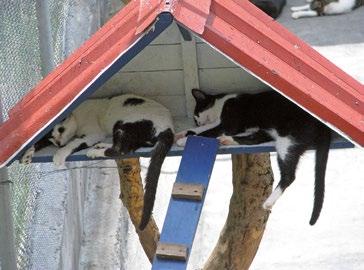DISORDERS ASSOCIATED WITH ENVIRONMENTAL STRESS
CAT STEREOTYPIES
2
Stereotypies are the manifestation of an animal’s previous Stereotyped behaviours are abnormal expressions of normal or current conflict with its environment, its early life behaviours typically observed in the species, for example, experiences, and its genetic predisposition (e.g. wool sucking grooming, vocalisation, locomotion, etc. in oriental breeds).
CLINICAL SIGNS Some anomalous conducts can derive from a normal movement pattern and transform into stereotypies or compulsive behaviours, these also involve neurosis and by definition are not species‑specific behaviours. Accordingly, the clinical signs of stereotypies based on normal patterns can be found in Table 1.
Table 1. Clinical signs of stereotypies based on normal movement patterns.
Pattern Grooming
Clinical signs of the stereotypy ➤ Compulsive self-licking ➤ Hair chewing ➤ Acral granuloma (a cutaneous lump as a result of inflammation caused
by incessant licking)
Diet
➤ ➤ ➤ ➤ ➤
Polydipsia Polyphagia Wool sucking Excessive drooling Fabric eating
Locomotion
➤ ➤ ➤ ➤
Sudden movements of the body Running and jumping Freezing of gait Shaking or nodding the head
Vocalisation
➤ Constant meowing ➤ Constant crying ➤ Self-mutilation with or without vocalisation
Neurosis
➤ ➤ ➤ ➤
Regular aggression directed at people Teeth chattering Hunting nonexistent prey Staring into space
35


